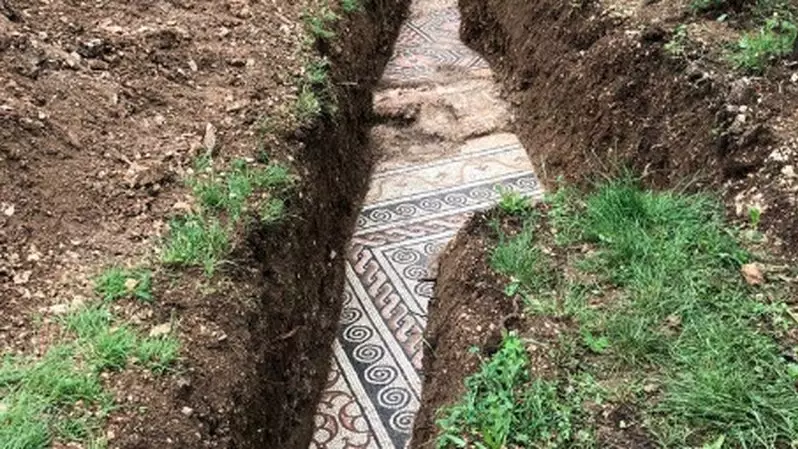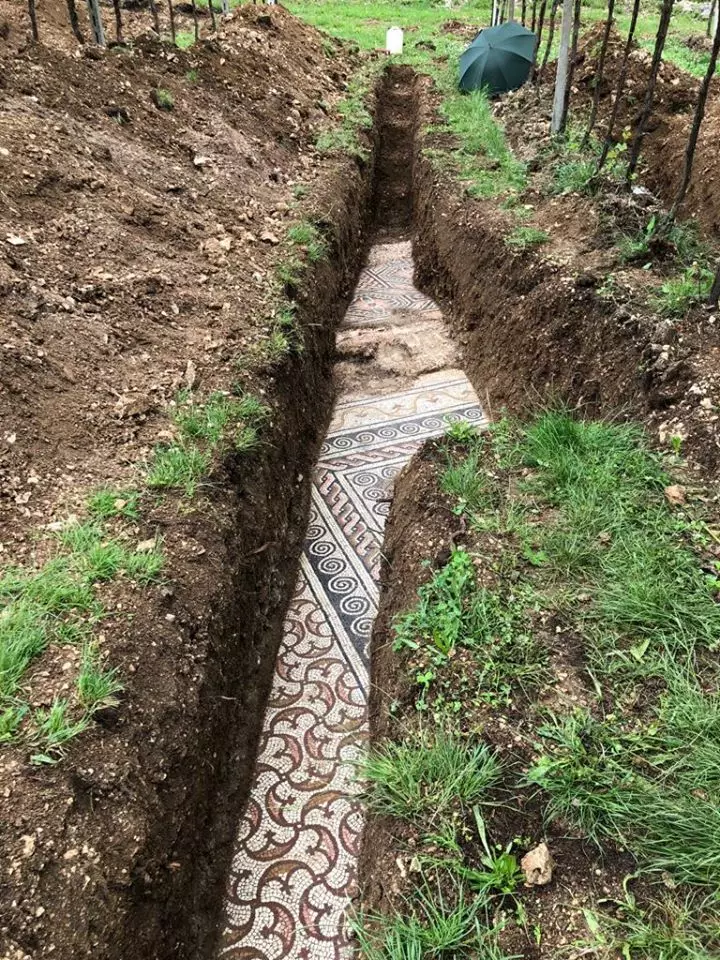
A team of archaeologists in Italy have unearthed a well-preserved floor of a Roman villa.
It was found just outside of the northern Italian city of Verona underneath a vineyard.

According to officials, evidence of the Roman villa was discovered more than a century ago now the pristine mosaic floor, as well as foundations of the villa, were found.
Advert
In a Facebook post, the Comune di Negrar di Vapoicella wrote: "After countless decades of failed attempts, part of the flooring and foundations of the Roman Villa located north of the capital, discovered by scholars over a century ago.
"The technicians of the Superintendence of Verona, with a targeted carrotage of the soil, are partially discovering the remains of the artifact still present under a few meters of the ground, with a precise objective: to identify the exact extension and exact location of the ancient construction.
"Subsequently, the Superintendence will connect with the owners of the area and with the Municipality to identify the most suitable ways to make this archaeological treasure available and open and visible under our feet.

"The result will not come soon and significant resources will be needed. But it's important, finally, to track the road.
Advert
"The Municipality will provide all the necessary collaboration and thanks from now to the professionals of the supervision and the owners of the area for the unity of intent and the availability with which they are pursuing the project."
Back in November last year, archaeologists unearthed a fossilised Roman chariot with two horses in Croatia.

The fossilised remains were discovered in a large burial chamber that belonged to an 'extremely wealthy family' alongside the carriage that - presumably - the two horses would have once pulled.
Advert
The incredible find was made by the archaeologists from the City Museum Vinkovci and the Institute of Archaeology in Zagreb. They found the chariot - known in Roman times as a cisium - at the site called Jankovacka Dubrava, near to the village of Stari Jankovci in eastern Croatia.
The discovery represents an incredibly well-preserved example of how very rich Roman people would choose to enter - as they believed - the next life alongside their belongings and animals.
The museum curator Boris Kratofil explained: "The custom is associated with extremely wealthy families who have played a prominent role in the administrative, social and economic life of the province of Pannonia."
Featured Image Credit: Comune di Negrar di ValpolicellaTopics: News